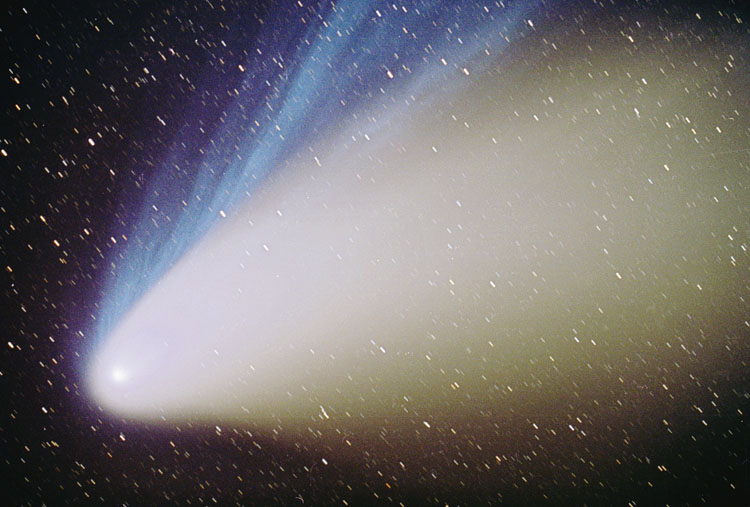|
Michael A. Stecker
|
|
Comet Hale-Bopp on April 4, 1997 had a relatively homogeneous
dust tail and a multi-stranded
blue ion tail. Photographic Data: This single 20-minute exposure was made with an Astro-Physics 130 mm (5-inch) f/6 refractor, 35 mm Nikon F2 camera and Kodak Pro 400 PPF film, while guiding on the comet's head. The negative was scanned in the raw color mode. This film/scanning combination shows the dust tail to have a white to pale yellow appearance. Its semi-transparent nature allows stars to shine through the less dense periphery. The small nucleus is also seen to better advantage. |
